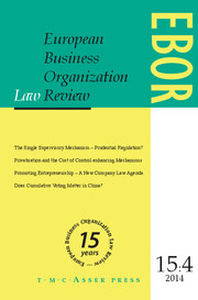Article contents
‘Form Follows Function’ – A New Architecture for Regulating and Resolving Global Financial institutions
Published online by Cambridge University Press: 28 September 2009
Abstract
The global financial crisis has revealed significant weaknesses in resolution regimes for large and internationally active financial institutions. The nub of the problem is the mismatch that exists between the way institutions are organised and operate, the way they are regulated and supervised and the way they are resolved in a crisis. The Lehman case illustrated that the greater the integration of individual entities into the operations of the wider group, the greater the challenges in achieving an orderly resolution. In a crisis it is legal entities rather than business lines that fail, and it is the legal entities that will be liquidated in separate and territorially-based proceedings. It is unrealistic to expect the creation of a global regulatory authority or an overarching international insolvency framework for cross-border financial groups in the foreseeable future. In light of the quasi-insurmountable obstacles to achieving a framework that adapts legal and regulatory frameworks to the economic reality of complex group structures and allows for a coordinated (or even consolidated) resolution of global financial institutions, this paper proposes an alternative approach. In order to reduce the complexities in resolution it suggests changes to the way in which financial groups structure themselves and conduct their operations.
Information
- Type
- Articles
- Information
- European Business Organization Law Review (EBOR) , Volume 10 , Issue 3 , September 2009 , pp. 369 - 385
- Copyright
- Copyright © T.M.C. Asser Press and the Authors 2009
- 5
- Cited by

